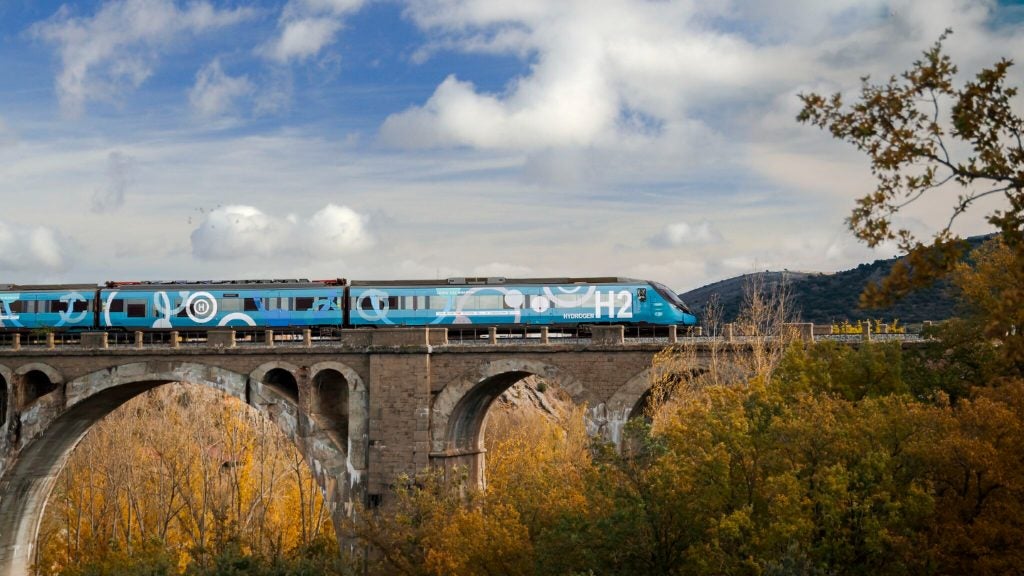
Customer experience is key to the rail industry to attract more customers to use the service and offer an appealing environment.
An increasing number of passengers like to stream video content, browse the web and access social media while travelling, increasing the importance of onboard technology to prevent streaming issues.
Most rail operators offer onboard Wi-Fi access for passengers, with some operators offering video-on-demand services. However, due to the increasing demand for bandwidth, streaming operators struggle to supply enough capacity for video.
Netskrt Systems – a company specialising in extending the internet reach to those in the industry- are working on technologies to allow rail operators to deliver unfettered access to video streaming.
Siegfried Luft, co-founder and CEO, Netskrt Systems, explained how this technology works.

How well do you really know your competitors?
Access the most comprehensive Company Profiles on the market, powered by GlobalData. Save hours of research. Gain competitive edge.

Thank you!
Your download email will arrive shortly
Not ready to buy yet? Download a free sample
We are confident about the unique quality of our Company Profiles. However, we want you to make the most beneficial decision for your business, so we offer a free sample that you can download by submitting the below form
By GlobalDataFrankie Youd (FY): Could you tell me a little bit about Netskrt Systems and what the company can offer the rail industry?
Siegfried Luft (SL): Netskrt Systems is focused on helping with the delivery of the internet. Existing trains will have various forms of Wi-Fi services, typically it’s connected via cellular connections. The challenge with that approach is that there’s only so much bandwidth available over the air.
As I’m sure most people have experienced, you’re on a train with a few 100 people, it’s not the best internet connection.
With video streaming – Amazon Prime, BBC iPlayer, platforms of that nature – when you’re watching this content at home, you’re not really connecting all the way to wherever the perceived centre of the universe for BBC is or for Amazon Prime to get your content – it is probably just down the street.
Now, this obviously does not work in an environment where a train is a moving object, and frankly, not very well connected at the best of times. So, what we’ve focused on is how can we take these technologies to the rail environment -or really stranded environments- and allow certain types of services to work as well as they do everywhere else.
That’s our focus, it’s about enabling streaming services to the passengers so that the train operator can let people use the apps that they want to use.
FY: What is edge Content Delivery Network (eCDN), and how does it aim to improve passenger experience?
SL: Content delivery is a concept that’s been around for a while; edge is a concept that says where the network is. When you think of the internet people typically think of big data centres with fibre running everywhere inside and outside of big telecom companies.
When you think of the edge, you’re talking about that last little mile between where we know your home is or the business is connected to the internet. So, it refers to how do you get closer and closer to where the consumption is. That edge concept and the concept of CDN have a certain cross-pollination.
Traditional CDNs, the way they’ve been developed, tend to be deeper into the network. In a big data centre where they will typically exist there’s a lot of points closer to the consumer. That would be referred to as the edge. Netskrt System’s edge CDN is a development of bringing the CDN concept closer and closer to the point of consumption. In a rail scenario, the ‘edge’ is literally the train.
FY: The company has been working on technology that leverages cloud analytics and hyper-scale storage – how does this work?
SL: To overcome some of the hurdles that have prevented other CDNs from approaching this space we needed to be a little bit smarter.
How a typical content delivery network works is that it will see a request for some data, and it’ll look at it and say: ‘somebody might want this I’m going to keep it for a second, I’m going to keep a copy in case somebody else wants to see this later’. When you have millions and millions of users all kind of converging through a certain point, all those requests start to become statistically relevant, we start to see sort of constellations of data forming.
If it happened to be a movie, that movie will be more or less all starting to appear inside that point in the CDN. If you look at a train it has 200 to 600 people on it, that is a statistically irrelevant number of endpoints. What we need to do in the cloud is compensate for the lack of enough data points to figure out what data needs to be pushed out, so we figure out what needs to be on the train, off the train, and then we push that data onto the train.
FY: Why do you think this technology has not been adopted sooner?
SL: There’s a component of hard tech involved; it’s not trivial to do what we’ve done – there’s a certain amount of timing as well.
There’s a couple of converging technologies that have become more viable now. I think one of them is storage. So, SSD [solid-state drive] storage is something that hasn’t been readily available other than the last few years, it’s come up and has become a viable technology.
There are a few other aspects, around the technical side, but I think the flip side is on the consumer side. A few years back, you probably could have convinced the consumer that they didn’t need to be watching a movie over the internet [on a train.] Maybe 2015 give or take, streaming services were really at the early stages, but since that point in time this year we’re at 22% of the population consuming media streaming. There’s been a tectonic shift in terms of what consumers expect in and terms of the internet.
FY: Can this technology be adapted to improve passenger experience in other ways?
SL: For Netskrt Systems our focus is really on delivering a better video streaming experience so very specific streaming services are currently integrated into our solution, that’s our focus.
Additionally, our edge CDN appliance is quite a powerful piece of equipment, there’s several additional functions that can be developed over time. We are working with one of the mobile operators in the UK, and they have several solutions in the internet of things space. That mobile operator is focused on the communications aspect of it.
Having a powerful device with a lot of storage, memory, and compute power on the train is a good starting point to do additional types of analytics and solutions of that nature.
FY: What do you think the future holds for railway internet technology?
SL: I think in the future the consumption in a rail environment will become at par with consumption anywhere else. The technical hurdles will be addressed through a combination of improved connectivity, trackside, low earth orbit or 5g -or all of the above.
Technologies like Netskrt Systems’ edge CDN will complement that; you will see the user experience being identical to at home. If you looked under the hood, you would see maybe some stuff is coming from the satellite, maybe some is coming from the edge CDN, some is coming over the 5G network, it will be transferred to the consumer, but it will start to converge to be on a par with everyone’s expectation.





